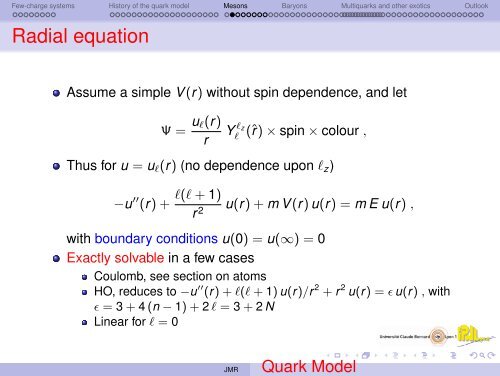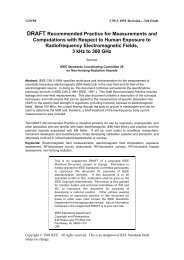An introduction to the quark model
An introduction to the quark model
An introduction to the quark model
Create successful ePaper yourself
Turn your PDF publications into a flip-book with our unique Google optimized e-Paper software.
Few-charge systems His<strong>to</strong>ry of <strong>the</strong> <strong>quark</strong> <strong>model</strong> Mesons Baryons Multi<strong>quark</strong>s and o<strong>the</strong>r exotics Outlook<br />
Radial equation<br />
Assume a simple V (r) without spin dependence, and let<br />
Ψ = uℓ(r)<br />
r<br />
ℓz<br />
Yℓ (ˆr) × spin × colour ,<br />
Thus for u = uℓ(r) (no dependence upon ℓz)<br />
−u ′′ (r) +<br />
ℓ(ℓ + 1)<br />
r 2<br />
u(r) + m V (r) u(r) = m E u(r) ,<br />
with boundary conditions u(0) = u(∞) = 0<br />
Exactly solvable in a few cases<br />
Coulomb, see section on a<strong>to</strong>ms<br />
HO, reduces <strong>to</strong> −u ′′ (r) + ℓ(ℓ + 1) u(r)/r 2 + r 2 u(r) = ɛ u(r) , with<br />
ɛ = 3 + 4 (n − 1) + 2 ℓ = 3 + 2 N<br />
Linear for ℓ = 0<br />
JMR Quark Model

















